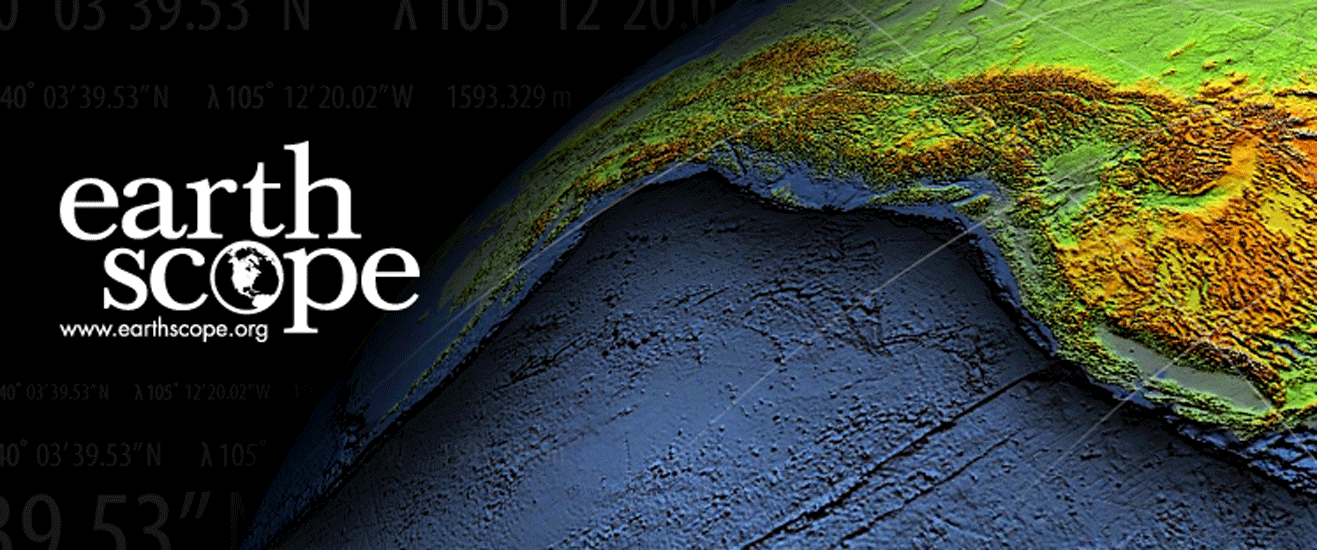By Donald Argus, Yuning Fu, and Felix Landerer - Summer 2014
Approximately 500 sites in California, most of which are part of the Plate Boundary Observatory, are weighing changes in the total mass of snow, soil moisture, and surface water as a function of location across the state. Changes in water storage are inferred from vertical movement of Earth's surface. The seasonal change in surface water thickness in California is about 0.5 meters in the Sierra Nevada and Klamath Mountains and about 0.1 meters east in the Great Basin. The seasonal change (October 1 to April 1) in total water in the Sierra Nevada mountains is estimated with GPS to have been on average about 35 gigatons each year from 2007 to 2013.
GPS is accurately measuring vertical displacements of Earth's surface in elastic response to changes in water storage in California. California's mountains are observed to subside as much as 12 millimeters during the fall and winter due to the load of snow and rain, then rise about the same amount in the spring and summer when the snow melts, rain water runs off, and soil moisture evaporates. Solid Earth deforms in elastic response to the load of water, snow, ice, and atmosphere. ("Elastic" means that strain generated in response to a surface load is fully recovered when the load is removed.) The elastic response to a surface load is specified by well-known Green's functions that are insensitive to Earth's rheological structure (except above thick sedimentary basins).
We performed a rigorous inversion of the GPS vertical displacements for equivalent water thickness at 1/4 degree intervals of latitude and longitude (at about every 25 km). A smoothing constraint is imposed to limit change in water thickness between adjacent pixels. Seasonal vertical displacements (Fig. 1, left) are used to infer the seasonal change in water thickness (Fig. 1, right). Earth's surface on top of aquifers responds differently to the addition of water. An aquifer expands as water fills the porous gravel, sand, and silt in the aquifer, causing Earth's surface to rise. Earth's surface rises in the winter when the aquifer is recharged with water and subsides in the summer when groundwater is withdrawn. GPS sites on top of aquifers were not used in this study to infer water changes (in particular in the southern Central Valley shaded gray in Fig. 1, right). GPS resolves seasonal water storage across California's different physiographic provinces well. The average seasonal water thickness change in California is about 0.5 meters in the Sierra Nevada, Klamath, and southern Cascade Mountains and decreases sharply to about 0.1 m eastward into the Great Basin and westward toward the Pacific coast.
The GPS estimates of seasonal change in water storage in the Sacramento–San Joaquin River basins (containing the Central Valley and Sierras) are consistent with observations from the Gravity Recovery and Climate Experiment (GRACE). The GPS results provide much greater spatial resolution than the satellite data and thus provide more information about water distribution for water resource management. The GPS data are compared to three hydrological models: North American Global Land Assimilation System (NLDAS-Noah), Global Land Data Assimilation System (GLDAS-Noah) and a composite model. The GPS data help to refine hydrological models and the comparison here suggests that NLDAS-Noah underestimates seasonal water storage in the mountains by about 50% while a composite model which includes snow, soil moisture and reservoir water is closer to the GPS results.
California is presently in the third year of drought. Snowpack and reservoir waters are very low. We are now using GPS to estimate the change in the total of snow and soil moisture during the past 36 months of drought given that reservoir water storage is well known and may be removed from the GPS estimate of total water. Developing the capability of estimating changes in surface water in near real time (within 1-2 days) would bring valuable information on water availability to resource managers.





